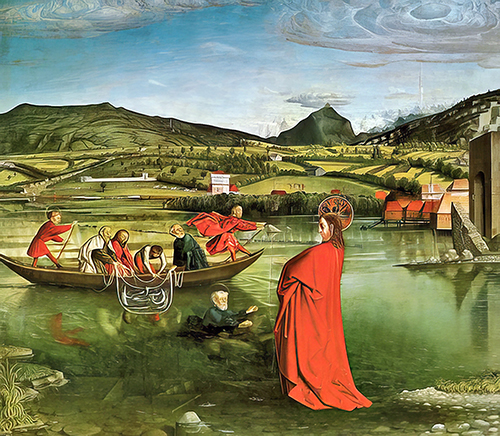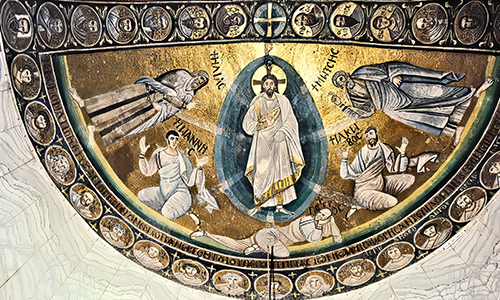
This Sunday’s Gospel ( Mt. 14: 22 – 33) recounts for us the story of Jesus walking on the water toward the disciples in the boat, Peter’s movement toward Jesus, Peter sinking, and Jesus stretching out and taking hold of him.
Did Jesus actually walk on the water? I have no idea!
Were there perhaps stones he used? I have no idea, although my mind casts back to the image of The Giants Causeway, an area of about 40,000 interlocking basalt columns, the result of an ancient volcanic fissure eruption.
It is located in County Antrim on the north coast of Northern Ireland.
Rather than concern myself with the historical truth of this narrative, I am going to use the story as a metaphor and invite you to journey with me!
The Jewish people of Jesus’ time, although some were fisherman, had a strong dislike of the sea. This dislike verged on fear.
The reason was that the sea was the home of Leviathan, the sea monster.
The Psalmist sings of God defeating Leviathan and other sea monsters (Psalm 74). Yahweh did not just make the world, he fought with the sea to make it. And having over-mastered the waters, to make the world, when he wanted to annihilate the world he regretted making, it was the waters he used to destroy it.
Deep in the folk lore and psyche of the Jewish people these stories are recalled around the campfire!
A storm at sea would stir the memories with immediacy, “battered by the waves, far from land, and the wind was against them” (v.24) [Leviathan has stirred!]
Right from within this place appears Jesus. Jesus is present in the home of the monster, and calls Peter to come to him through that sea.
Jesus is present in our stormy place, the place we dislike most, our place of fear.
And the way to Jesus is through it. There is no walking around the edges. Jesus is in the place of dislike, the place of fear. In fact, St. Peter calls to Jesus to come to him at that very place, “Lord, if it is you come to me on the water.”( v. 28)
The illustration shows Peter reaching out from the water (that place of dislike, of fear) and Jesus is there with him, in that same place.
The Scripture commentator, N.T. (Tom) Wright comments, “Curiously enough, only one great picture of this scene has ever been painted (by Conrad Witz in 1444. You might have thought it would have made an ideal subject: Jesus as a shimmering figure on the water, frightened disciples huddling in the boat, and Peter, caught between glory and terror, walking on the water towards Jesus and then…starting to sink. Perhaps devout artists avoided it because it seemed to show up the great apostle in a bad light” – N. T. Wright

